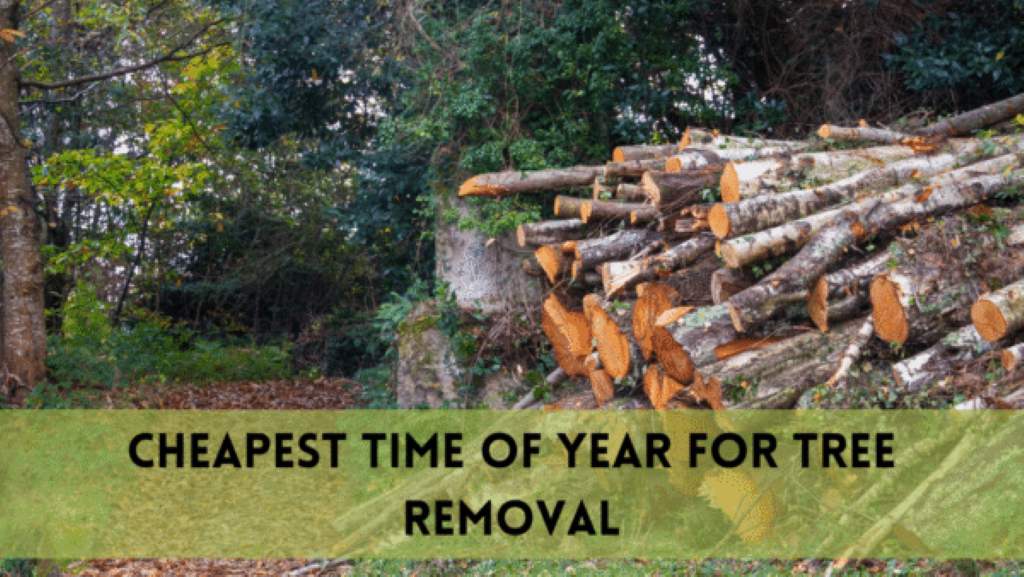Proper tree care is essential to maintaining the beauty and health of your landscape. One crucial aspect of tree care is knowing “When should you trim trees?.” Trimming at the right time ensures the well-being of the trees while avoiding potential damage. In this comprehensive guide, we’ll explore the optimal times for tree trimming, offer expert advice, and address common questions about this essential practice.
Why is Tree Trimming Important?
Proper tree trimming isn’t just about aesthetics; it’s essential for the health and safety of your trees. Regular trimming promotes strong growth, prevents disease, and enhances the overall beauty of your landscape. It’s crucial to understand the best times for tree trimming to maximize these benefits.
When Should You Trim Trees: The Best Times
The timing of tree pruning depends on the type of tree and its growth patterns. Generally, the best time to trim most trees is during the dormant season, which is typically late fall to early spring. Trimming during this period minimizes stress on the trees and reduces the risk of disease transmission through open wounds. However, some exceptions exist:
- Spring-Flowering Trees: Trees that bloom in spring, such as cherry and dogwood trees, should be trimmed shortly after their flowering season ends. This allows them to set buds for the next year.
- Summer-Flowering Trees: Trees like crepe myrtle bloom in summer, and they should be trimmed in late winter or very early spring before new growth begins.
- Evergreens: These can be trimmed throughout the year, but the dormant season is still preferable. Light trimming in late spring or early summer can also be beneficial.
- Dead or Diseased Branches: Regardless of the season, it’s crucial to promptly remove dead or diseased branches to prevent further damage to the tree.
Signs It’s Time to Trim Your Trees
Apart from knowing the right season, it’s essential to recognize signs that indicate a tree needs trimming. Look out for:
- Overhanging branches near power lines or structures
- Branches that are rubbing against each other
- Dead, diseased, or damaged branches
- Trees that are becoming too dense, blocking sunlight or airflow
- Hazardous limbs that could fall during storms
Common Mistakes to Avoid When Trimming Trees
While tree trimming offers numerous benefits, there are common mistakes that people make, leading to negative consequences for the trees:
- Incorrect Pruning Techniques: Improper cuts can damage the tree, invite disease, and result in an unattractive appearance.
- Over-Pruning: Excessive trimming, also known as “topping,” can weaken the tree, making it more susceptible to pests and diseases.
- Trimming at the Wrong Time: Trimming during the growing season can stress the tree, and trimming late in the fall may not allow sufficient time for the wounds to heal.
- Ignoring Safety Precautions: Tree pruning can be dangerous. Always use proper safety equipment and consider hiring professional tree care for high or difficult-to-reach branches.
The Benefits of Regular Tree Pruning
Regular tree pruning offers a range of benefits for both your trees and your property:
- Improved Tree Health: Trimming removes dead or diseased branches, promoting overall tree health.
- Enhanced Aesthetics: Proper trimming enhances the shape and appearance of the tree, adding beauty to your landscape.
- Risk Reduction: Trimming eliminates hazardous branches that could fall during storms, reducing the risk of property damage or injury.
- Increased Sunlight: Thinning the canopy allows more sunlight to reach the lower branches, promoting healthy growth.
- Disease Prevention: Trimming prevents the spread of diseases through open wounds and improves air circulation.
How to Properly Trim Trees: Step-by-Step Guide
Proper tree trimming requires careful planning and precise execution. Here’s a step-by-step guide to help you trim your trees effectively:
- Inspect the Tree: Identify which branches need trimming. Focus on dead, diseased, or crossing branches.
- Gather the Right Tools: Use sharp, clean pruning shears for smaller branches and a pruning saw for larger ones.
- Make Proper Cuts: Trim just outside the branch collar, the area where the branch connects to the trunk, to promote healing.
- Prune Away the Four D’s: Remove branches that are dead, diseased, damaged, or growing in the wrong direction.
- Maintain Proportions: Trim to maintain the tree’s natural shape and avoid over-pruning.
Tree Trimming Tools and Safety Measures
Having the right trimming tools and taking safety precautions are crucial when trimming trees. Here are some essential tools and safety measures to consider:
- Pruning Shears: Use for small branches up to ¾ inch in diameter.
- Pruning Saw: Necessary for branches larger than ¾ inch.
- Ladders: Use stable, sturdy ladders with someone to assist.
- Safety Gear: Wear gloves, safety glasses, and a helmet to protect yourself from falling debris.
- Professional Help: For high or hard-to-reach branches, consider hiring a certified arborist.
Conclusion
Knowing when to trim your trees is vital for their health and the overall appearance of your landscape. By following the guidelines provided in this article, you’ll be able to maintain beautiful, healthy trees while avoiding common mistakes. Remember, safety should be a top priority, and when in doubt, it’s wise to consult with a professional arborist.
FAQs
1. How often should I trim my trees?
Regular trimming every 3-5 years for maintenance or as needed for specific issues.
2. Can I trim my trees during the summer?
It’s best to avoid heavy trimming during the summer, as it can stress the trees.
3. Is it necessary to hire a professional for tree trimming?
While small trimming jobs can be DIY, for large trees or complex trimming, a professional is recommended.
4. What’s the ideal branch length to trim?
Aim to trim branches that are less than one-third of the tree’s total height.
5. Can I trim my trees in the fall?
Trimming in fall can be risky, as the tree may not have enough time to heal before winter. Stick to the dormant season if possible.
6. What should I do with the branches after trimming?
Properly dispose of branches, either by using them as mulch or arranging for removal.




